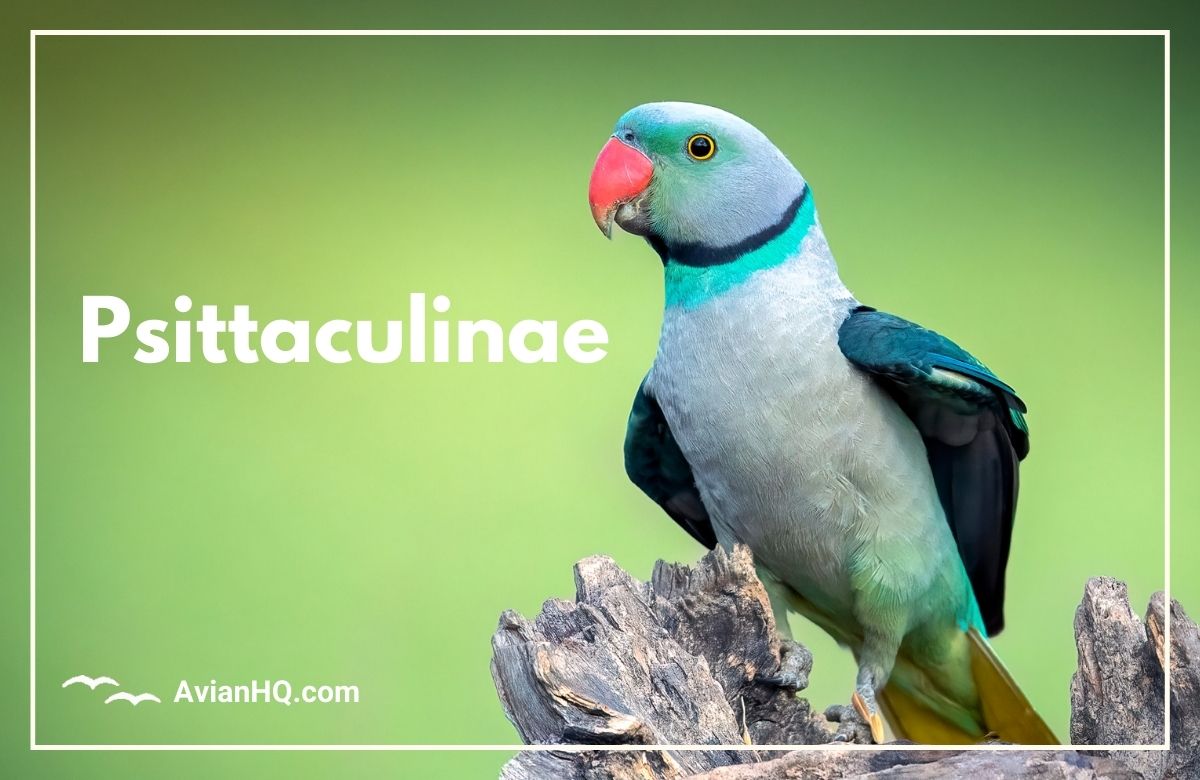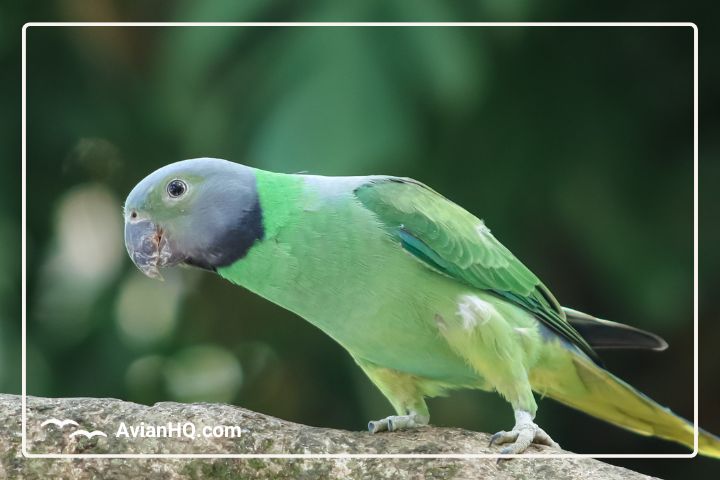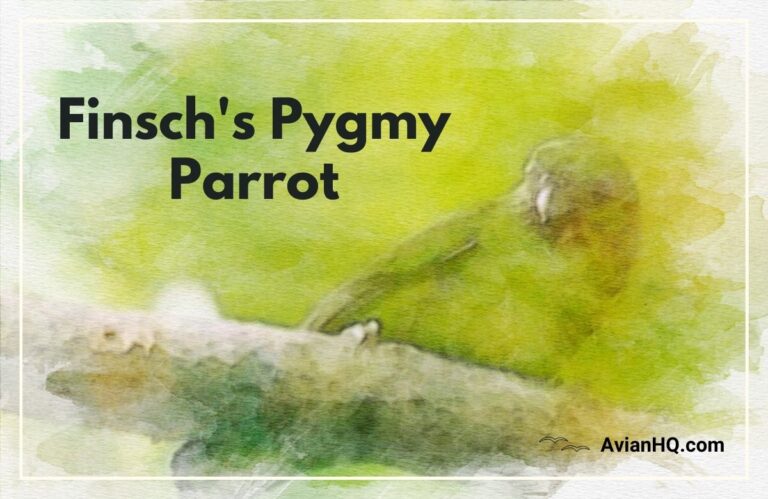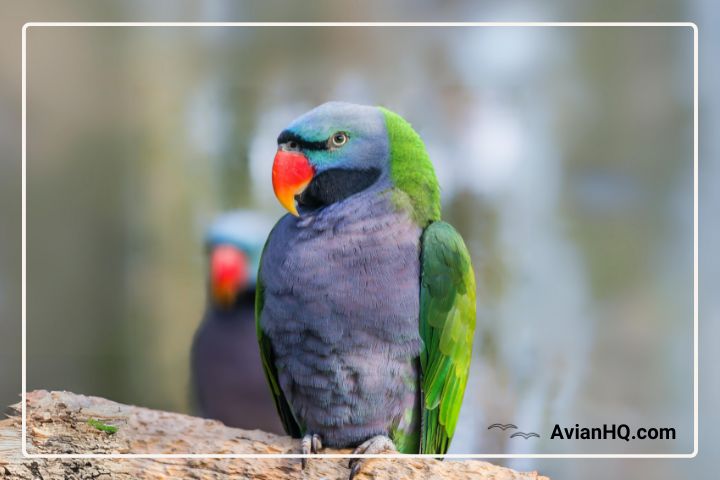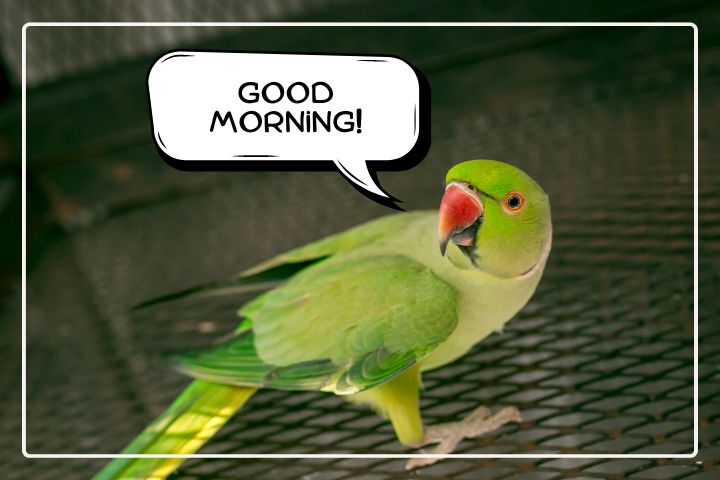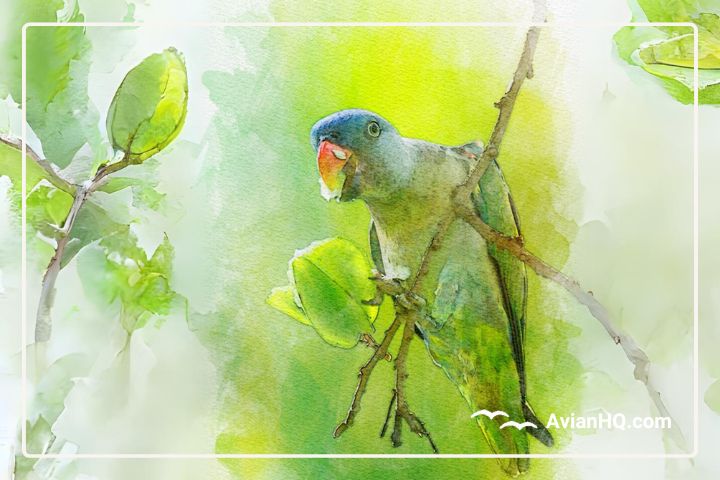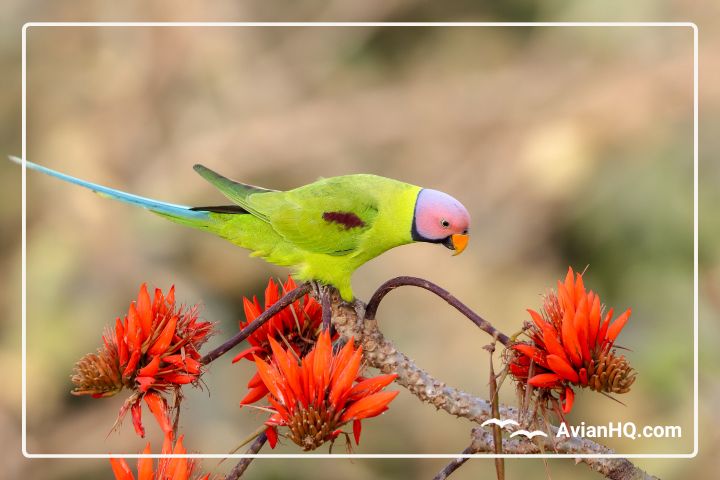Psittaculinae
Parrots captivate with their vibrant colors, raucous calls, and playful antics. And the Psittaculinae comprises one subfamily chock full of especially charismatic species guaranteed to impress enthusiasts around the world. Whether it’s the bright red, blue, and green plumage of Australia’s gem-like Princess Parrot, the unique toe arrangement allowing Blue-crowned Racket-tails to grip fruit and seeds in the Philippines, or the striking visual gender differences between male and female Eclectus Parrots of New Guinea, these clever birds intrigue and delight.
To establish the taxonomic place of these fascinating birds within the larger Psittaculidae family tree, let’s begin by laying out the scientific classification for this Psittaculinae Sub-Family.
Scientific Classification
KINGDOM: Animalia
PHYLUM: Chordata
CLASS: Aves
ORDER: Psittaciformes
FAMILY: Psittaculidae
SUB-FAMILY: Psittaculinae
GENUS: Alisterus
SPECIES:
- Australian King Parrot (Alisterus scapularis)
- Moluccan King Parrot (Alisterus amboinensis)
- Papuan King Parrot (Alisterus chloropterus)
GENUS: Aprosmictus
SPECIES:
- Jonquil Parrot (Aprosmictus jonquillaceus)
- Red-winged Parrot (Aprosmictus erythropterus)
GENUS: Eclectus
SPECIES:
- Moluccan Eclectus Parrot (Eclectus roratus)
- Papuan Eclectus Parrot (Eclectus polychloros)
- Sumba Eclectus Parrot (Eclectus cornelia)
- Tanimbar Eclectus Parrot (Eclectus riedeli)
- Oceanic Eclectus Parrot (Eclectus infectus) (extinct or prehistoric)
GENUS: Geoffroyus
SPECIES:
- Blue-collared Parrot (Geoffroyus simplex)
- Red-cheeked Parrot (Geoffroyus geoffroyi)
- Rennell Parrot (Geoffroyus hyacinthinus)
- Song Parrot (Geoffroyus heteroclitus)
GENUS: Lophopsittacus
SPECIES:
- Broad-billed Parrot (Lophopsittacus mauritianus) (extinct or prehistoric)
GENUS: Mascarinus
SPECIES:
- Mascarene Parrot (Mascarinus mascarinus) (extinct or prehistoric)
GENUS: Micropsitta
SPECIES:
- Buff-faced Pygmy Parrot (Micropsitta pusio)
- Finsch’s Pygmy Parrot (Micropsitta finschii)
- Geelvink Pygmy Parrot (Micropsitta geelvinkiana)
- Meek’s Pygmy Parrot (Micropsitta meeki)
- Red-breasted Pygmy Parrot (Micropsitta bruijnii)
- Yellow-capped Pygmy Parrot (Micropsitta keiensis)
GENUS: Necropsittacus
SPECIES:
- Rodrigues Parrot (Necropsittacus rodericanus) (extinct or prehistoric)
GENUS: Polytelis
SPECIES:
- Princess Parrot (Polytelis alexandrae)
- Regent Parrot (Polytelis anthopeplus)
- Superb Parrot (Polytelis swainsonii)
GENUS: Prioniturus
SPECIES:
- Blue-crowned Racket-tail Parrot (Prioniturus discurus)
- Blue-headed Racket-tail Parrot (Prioniturus platenae)
- Blue-winged Racket-tail Parrot (Prioniturus verticalis)
- Buru Racket-tail Parrot (Prioniturus mada)
- Golden-mantled Racket-tail Parrot (Prioniturus platurus)
- Green Racket-tail Parrot (Prioniturus luconensis)
- Mindanao Racket-tail Parrot (Prioniturus waterstradti)
- Mindoro Racket-tail Parrot (Prioniturus mindorensis)
- Montane Racket-tail Parrot (Prioniturus montanus)
- Yellow-breasted Racket-tail Parrot (Prioniturus flavicans)
GENUS: Psittacula
SPECIES:
- Alexandrine Parakeet (Psittacula eupatria)
- Blossom-headed Parakeet (Psittacula roseata)
- Echo Parakeet (Psittacula eques)
- Grey-headed Parakeet (Psittacula finschii)
- Layard’s Parakeet (Psittacula calthorpae)
- Long-tailed Parakeet (Psittacula longicauda)
- Lord Derby’s Parakeet (Psittacula derbiana)
- Malabar Parakeet (Psittacula columboides)
- Mascarene Grey Parakeet (Psittacula bensoni)
- Newton’s Parakeet (Psittacula exsul)
- Nicobar Parakeet (Psittacula caniceps)
- Plum-headed Parakeet (Psittacula cyanocephala)
- Red-breasted Parakeet (Psittacula alexandri)
- Indian-ringneck Parakeet (Psittacula krameri)
- Seychelles Parakeet (Psittacula wardi)
- Slaty-headed Parakeet (Psittacula himalayana)
GENUS: Psittinus
SPECIES:
- Blue-rumped Parrot (Psittinus cyanurus)
- Abbot’s Hanging Parrot (Psittinus abbotti)
GENUS: Tanygnathus
SPECIES:
- Black-lored Parrot (Tanygnathus gramineus)
- Blue-backed Parrot (Tanygnathus sumatranus)
- Blue-naped Parrot (Tanygnathus lucionensis)
- Great-billed Parrot (Tanygnathus megalorynchos)
Welcome to the Wonderful World of Parrots!
Parrots are some of the most colorful, vocal, and intelligent birds on the planet. And the Psittaculinae subfamily contains some exceptionally fascinating species. From the raucous calls of Eclectus parrots echoing over the rainforests of New Guinea to the mischievous antics of pet ring-necked parakeets, these birds never fail to capture people’s imaginations.
This guide will give you a comprehensive overview of the Psittaculinae—one remarkable branch of the parrot family tree. We’ll explore what defines these parrots, where you can find them in the wild, what threats they face, and the conservation efforts underway to protect them.
“Parrots have become popular as pets throughout the last few decades for many good reasons. They are exceptionally beautiful, often brightly colored with reds, blues, greens and yellows. They are also intelligent, charismatic and long lived.”
So whether you’re a bird watcher who dreams of seeing a Princess Parrot soaring over Australia, someone considering getting a parrot as a pet, or simply interested in learning more about parrots, stick around. We’re going to cover everything you need to know about these fascinating fliers in this guide. Let’s take flight!
The Dazzling Looks of the Psittaculinae
One of the most standout features of parrots in the Psittaculinae subfamily is their vibrant plumage. Like their larger macaw and cockatoo cousins, these parrots come in a rainbow of colors. Bright reds, greens, blues, and yellows decorate their feathers, making them a feast for the eyes.
In terms of size, Psittaculinae parrots are relatively small to medium-sized. They range from the tiny 3.5 inch (9 centimeter), .1 ounce (2-3 gram) Buff-faced Pygmy Parrot to the 2 foot (60 centimeter) long Eclectus Parrot that can weigh up to 1.1 pounds (500 grams).
“The Princess Parrot of Australia is one of the most vibrant members of the Psittaculinae subfamily, with a blaze of bright red feathers on it’s head and wings.”
Within the subfamily, some distinct physical traits help characterize different groups. Lories and lorikeets like the Blue-crowned Racket-tail have specialized brush-like tongues for nectar-feeding. Smaller parakeets and conures like the Rose-ringed Parakeet have stockier bodies and short, blunt tails. And the large, long-tailed Eclectus Parrot has striking gender differences, with bright red plumage on males and deep green and royal blue colors on females.
No matter what shape, size, or color palette, the Psittaculinae contains an incredible diversity of stunning species sure to impress parrot lovers everywhere. Next, we’ll learn about some of the behaviors that make these parrots so captivating in the wild and as pets.
The Captivating Behaviors of Psittaculinae Parrots
In addition to their visual appeal, Psittaculinae parrots showcase an array of interesting behaviors sure to catch your attention. Many species live in active, noisy flocks that chatter constantly. Their calls can echo loudly through the forests as they communicate and socialize.
Most members of the subfamily form monogamous pairs and collaborate to prepare nests in tree cavities. For example, the Princess Parrot of Australia creates nests up to 13 feet (4 meters) deep inside termite mounds or eucalyptus trees. Both the male and female share brooding duties once the female lays eggs.
The majority of these parrots feed on seeds, fruits, nectar, and vegetation. Their strong beaks allow them to crack hard nuts and seeds. Some use their specialized tongues to slurp nectar out of flowers. Others even eat insects and their larvae if vegetables and fruits become scarce.
“Blue-crowned Racket-tails in the Philippines can use their unique foot structure to hold food items and bring them right to their mouths!”
In captivity, these smart parrots love to play with toys and puzzle feeders. Their strong urge to chew must be satisfied with plenty of wooden toys and branches. Food puzzles that make them work for treats stave off boredom and excessive noise.
With loud voices, high energy, intelligence, and affectionate bonds with mates, Psittaculinae parrots showcase captivating behaviors guaranteed to entertain their human companions. Next, we’ll explore where different genera and species make their treetop homes.
Fascinating Homes Around the World
Parrots in the Psittaculinae subfamily live in a diverse array of habitats across Australasia, Asia, Africa, and the islands of the Indian and Pacific Oceans. Different species have adapted to make their homes in grasslands, forests, swamps, mangroves, and even city parks.
Most species in this group originate from and primarily live in Australia, New Zealand, and nearby islands like Sulawesi and New Guinea. For example, the Golden-mantled Racket-tail inhabits forests and garden areas in northern Australia. Meanwhile, both the Red-cheeked Parrot and Song Parrot populate rainforests in northeastern Australia and New Guinea.
“Alexander von Humboldt first described the Blue-crowned Racket-tail from the Philippines in 1811 during his famous South American exploration.”
Other Psittaculinae parrots come from central Africa, southern Asia, and many smaller island chains. The Grey-headed Parakeet occupies deciduous forests interspersed with farmland in central India. And the famous Rose-ringed Parakeet now lives wild in cities from North Africa and across southern Europe all the way to Japan!
Thanks to imports of wild-caught parrots for the pet trade, escaped birds, and deliberate releases, some parrots like the Red-crowned Parakeet have established invasive populations far from their original home in eastern Africa and islands in the Indian Ocean.
From the Blue-backed Parrot foraging through Indonesian nutmeg plantations to the Rock Parakeet adapting to life in fruit orchards in French Polynesia, Psittaculinae parrots live on 6 continents and in a wide variety of habitats. But many now face concerning threats to their long-term survival.
Unique Genera Worth Spotlighting
The Psittaculinae contains over 50 species across 13 extant genera. Let’s briefly explore some fast facts about what makes each genus special.
Alisterus: Bold Aussie Parrots
The three king parrots in this genus inhabit forests across eastern Australia to New Guinea. Their big heads, short necks, and stocky bodies give them a distinct look.
Aprosmictus: Red & Green Duos
The two parrots in this genus contrast bright red patches in their wings and tails with green on their backs and heads. They reside in northeast Australia and islands off New Guinea.
Eclectus: Polymorphic Pairs
As we covered earlier, male and female Eclectus Parrots look strikingly different from their partners. This vivid dichromatism sets them apart from related species.
Geoffroyus: Tropical Island Dwellers
The four species in this genus largely restrict themselves to tropical forests on islands off Australia and New Guinea like the Solomon Islands. Their bright crimson rears and turquoise wing panels make them true island jewels.
Micropsitta: Itty Bitty Birds
True to their name, the six tiny pygmy parrots in this genus represent the smallest members of the entire subfamily. Few span over 4 inches long. They flit through Papua New Guinea and nearby Indonesian islands.
Polytelis: Princess Parrot Reigns
Australia’s stunning Princess Parrot highlights this genus of three species. Sharp black, yellow, and scarlet markings make it royalty among Australia’s parrots. The others sport more subdued greens and yellows.
Prioniturus: Funky-Toed Feeding
As mentioned earlier, the racket-tailed parrots in this genus have specially adapted toe arrangements allowing them to grip food in one foot. The genus is named for their unique saw-like feather shafts.
Psittacula: Globe-Trotting Parakeets
From Africa to Asia to Europe and beyond, the ring-necked and slender-tailed parakeets in this genus have established invasive feral populations across several continents thanks to the caged bird trade.
Psittinus: Blue-Backed Beauties
The two parrots in this Indonesian genus wear attractive blue feathers on their rumps, wings, and tails contrasting with green on their heads and bellies. The Blue-rumped Parrot consumes small snails to supplement it’s fruit diet.
Tanygnathus: Big-Billed Seed Crackers
This genus sports extra large, powerful beaks specialized for cracking open hard nuts and seeds their tongues then extract. They inhabit Indonesia, the Philippines, and other western Pacific islands.
This quick tour through the unique genera of the Psittaculinae provides just a glimpse into the diverse lifestyles and adaptations of these fascinating parrots. From tiny insects-eaters to powerful nut-crackers, forest-dwellers to city-dwellers, this subfamily has filled an incredible array of ecological niches across the southern hemisphere and beyond.
Extinguished Before Their Time
While most genera in the Psittaculinae subfamily live on today, three tragic cases saw human pressures drive remarkable species forever into the void of extinction.
Lophopsittacus: Extinct Mascarene Marvels
This genus formerly contained the iconic Broad-billed Parrot that inhabited forested areas of the Mascarene Islands in the Indian Ocean. It sported striking blue wings and a red band across it’s beak. Overhunting led to it’s extinction in the 1850s.
Mascarinus: Another Lost Mascarene
Like it’s cousin, the lone Mascarene Parrot in this genus also met an untimely end due to unrestrained hunting and habitat loss on the islands it called home. We have few first-hand accounts left to remember these extinct birds by.
Necropsittacus: Sad Song of Another Era
Deforestation and invasive mammals proved the deadly duo that doomed the one owned Rodrigues Parrot of this genus. Limited fossil evidence hints at it’s former glory before human-driven extinction silenced it’s voice forever on the tiny Rodrigues Island.
Modern Threats Facing Psittaculinae Populations
Despite their broad distribution around the world, many Psittaculinae parrots now face devastating threats driving population declines. Destruction of native habitat, capture for the pet trade, competition and attacks from invasive species, and climate change all endanger these birds.
Deforestation from logging, wildfires, and land conversion for agriculture ravages the tropical forests Psittaculinae species rely on for nesting and foraging. For example, only small, fragmented habitat remains on the Mascarene Islands in the Indian Ocean, once home to more Psittaculinae species now extinct.
Additionally, trappers capture wild parrots like the Tanimbar Corella for sale to consumers wanting them as pets. Most parrots struggle to adjust and survive long in captivity. And smugglers often pack them poorly, causing high mortality rates. This illegal trade has decimated their numbers in the wild.
Invasive predators, competitors, and diseases also seriously threaten Psittaculinae parrots. Non-native rats attack adults and eggs alike. Escape pet birds outcompete native species for nest sites and food. Viruses like psittacine beak and feather disease can quickly spread through wild populations.
Finally, global climate change promises to alter suitable ranges and food availability for parrots with very specialized diets. Rising temperatures may make current habitats inhospitable for already endangered species.
Facing this combination of intensifying threats, multiple Psittaculinae species now hover at the brink of extinction. Urgent, informed conservation action offers their only hope.
Ongoing Efforts to Conserve These Amazing Birds
In light of significant threats driving population declines, many Psittaculinae parrots now rely on direct human conservation efforts for their continued existence. Both governmental agencies and non-profit organizations work to protect vital habitat, captive breed endangered species, reintroduce birds to the wild, and build public support.
Protecting existing habitat from further destruction provides the most fundamental need for sustaining wild Psittaculinae populations. National parks aim to conserve rainforest areas but often suffer from illegal logging and agricultural encroachment. Non-profits purchase private land for reserves as well.
Captive breeding programs serve vital roles for the most endangered species. Zoos and aviaries maintain special breeding facilities focusing on species like the Echo Parakeet. These flocks produce young parrots raised free of hunting pressures and climate threats who can then be reintroduced to bolster wild populations.
Reintroduction initiatives help rebuild sustainable wild flocks. Scientists carefully monitor the health, movement patterns, and survival of released captive-raised birds. As the parrots adjust successfully, their wild numbers slowly increase over time.
Raising public awareness and support also drives critical conservation gains. As more people learn about the imperiled status of these charming parrots, they often donate time and money towards protection efforts. Documentaries showcasing species like the Yellow-breasted Racket-tail foster support for habitat conservation.
While major challenges remain, targeted conservation initiatives have already pulled some endangered species back from the brink. Sustained efforts promise hope for protecting the remainder of these marvelous parrots.
Conclusion: The Captivating Psittaculinae Parrots Deserve Our Care
As we’ve explored in this guide, parrots in the Psittaculinae subfamily showcase a stunning diversity of sizes, plumages, behaviors, habitats, and conservation statuses. These intelligent, vocal birds never fail to impress with their vibrant colors and animated antics.
From tiny Pygmy Parrots just over 3 inches long to the imposing 2 foot tall Eclectus Parrot, Psittaculinae species come in all shapes and sizes. Red, blue, green, yellow, and every shade in between decorate their feathers. Loud choruses echo through their forest and city homes as they chatter vigorously.
While still abundant in some regions, many Psittaculinae parrots now balance precariously on the brink of extinction. Habitat loss, trapping for the pet trade, non-native predators, and climate cha

